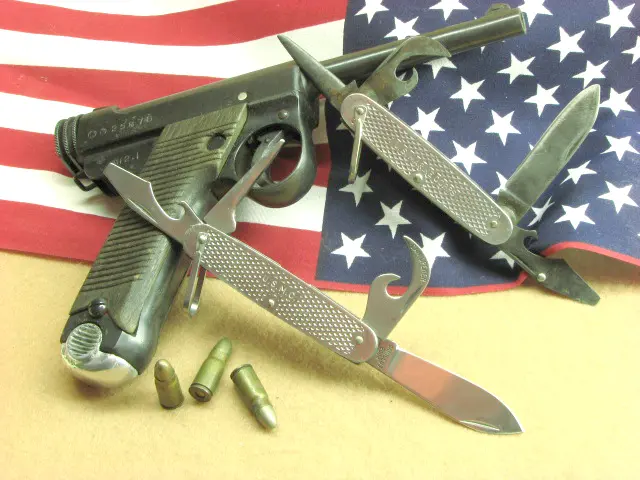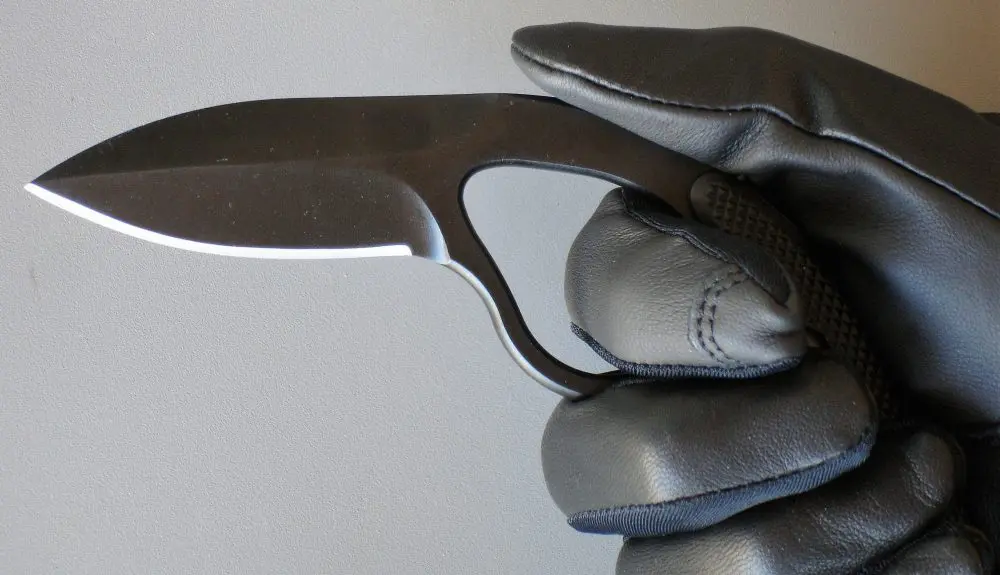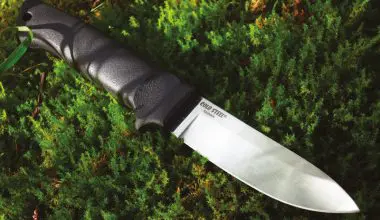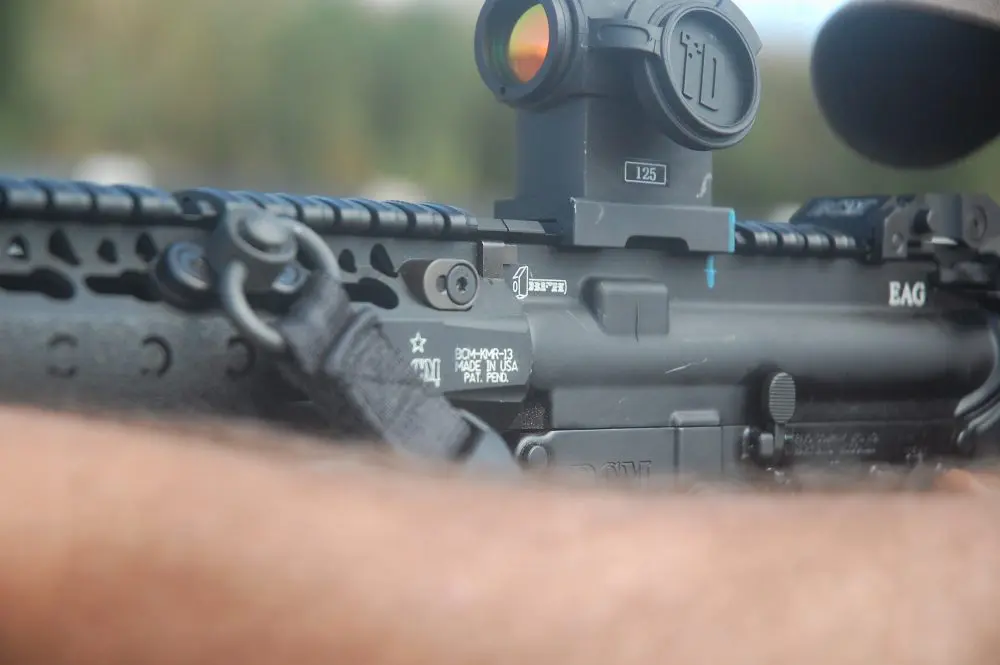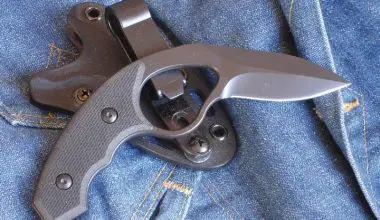Committees only produce rotary motion, but collaborations between mission-oriented men of ability produce results—like Mike Fuller’s design team at TOPS Knives and the production ability and quality orientation of Buck Knives bringing us the CSAR-T series.
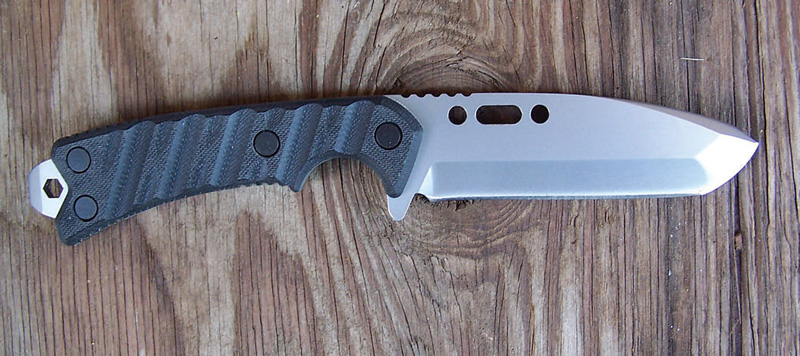
A common misconception is that writers never had an honest job. To explain why I like the robust design and no-compromise construction of Buck’s Model 690 CSAR-T Fixed Blade, I’ll interject that I was schooled as a hardhat (“deep sea”) diver and worked as a commercial diver. Fifty years ago, “dive” knives were mostly shiny, but barely hardened 420 stainless, in fantasy shapes made for TV. The original Navy diver’s knife was possibly the worst GI knife ever, including the trowel bayonet. It was the strange, mostly worthless, Mk V.
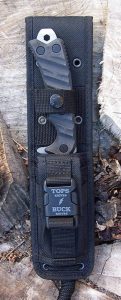
Made to 1929 specs before stainless knife steels were common, the blade was soft and would not hold an edge, possibly because hardenable highcarbon steel corroded too rapidly. It featured an odd round bulb-shaped, slippery maple handle, so you could never tell the blade’s orientation by your grip. Compounding the silliness, it screwed into a tubular brass sheath—to ensure you couldn’t even tell which way the blade was facing by how it rode in the sheath.
It did have saw teeth to the tip of the spear-point blade on one side, but they were too soft for serious use. Divers, having a job to do, usually just stole a bayonet and ground the spine so it would slide into the round brass sheath. When it rusted out, they stole another one.
Today, good stainless knives are available, even from titanium with no magnetic signature, which brings us to the Combat Search and Rescue knife designed by TOPS Knives and manufactured by Buck Knives. It wasn’t designed for this, but I can’t think of another knife I would prefer if I were a working diver today.
What a commercial diver does with, or to, his knife is what a hard worker does on the surface, except that any weakness is more important working at depth because you can’t just bob up to replace what breaks. In addition, a diver is going to git ’er done even if he must seriously abuse his tools, rather than waste a dive. These points speak to a knife’s strength of design and materials. In getting the job done, ergonomic design and configuration of the working features become important.
Knife functions underwater usually involve heart-pounding excitement like scraping rust, barnacles or coral; prying corroded parts; cutting fouled line; or otherwise getting the work-piece ready for specialized tools like a big ol’ wrench, hydraulic tools, or a torch. In these functions, an obtuse edge plus the meaty and mightily thick blade and modified Tanto tip of the CSAR-T would stand a diver in good stead.
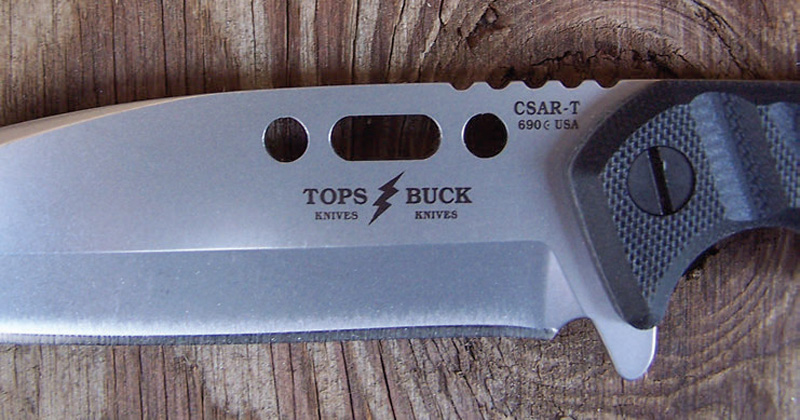
There is a 4.5-inch working length to this blade, and the overall length of the tool is ten inches. The lanyard hole in the butt is also good (tools on a lanyard are more important underwater than even soap on a rope is in prison, because sometimes life is just simpler if you don’t drop things). There is an oxygen wrench inlet just below the spine, in addition to two 15/64-inch holes for bending wire (bending away remesh that just cut me underwater is something I’ve done a lot). But what made me think “Wow, what a good dive knife” is the way it falls to the hand.
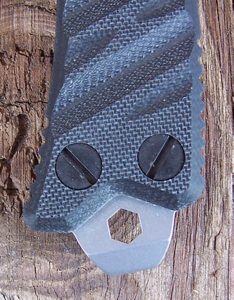
Whether a knife handle fits a given hand concerns individual physiology, but whoever grabs this knife—in daylight or darkness, underwater or topside, gloved or bare-handed—will have no doubt of exactly its orientation in his hand. The shape and deeply sculpted G-10 handle in “Rocky Mountain Tread” give a solid grip like no other I’ve seen on a heavy working fixed blade.
When you can see, your eye is on the work; when you can’t see, you must know where the blade is or you’ll lose fingers, so this tactile grip is crucial. With a tad more length, maybe serrations on the top of the false edge, and a poundable butt, I can’t think of a working dive knife that could compete with the CSAR-T. It would withstand pounding on the spine with a bronze hammer to part a line or cable (although pounding and chopping underwater are an exercise in slow-motion).
For its intended use, with adrenalin flowing and lives at stake in a rescue scenario, there is probably nothing you could do with your hands to make this knife quit. The 420HC blade is a stout .18-inch thick most of the way to the modified Tanto tip. Buck hardens these blades to Rc 58-60, probably ideal for a strong blade whose mission will preclude you stopping to sharpen, but likely to be abused as a pry bar.
It weighs 8.8 ounces but hangs and balances just at the finger cutout, which serves as a choil, giving control without costing blade length. For its length, it’s an efficient chopper.
The thick blade will let you do serious baton work to split things, cut through structural members, or part line. The tip at the butt is beveled to get between things and pry, and the lanyard hole accepts hex bits. It is blasted to a businesslike matte finish with zirconium silicate ceramic. The grips dismount, as for lashing into a spear. It comes in a high quality MOLLE-compatible nylon sheath.
Compared to the timeless beauty of the Buck 119 or a classic Bowie like Bill Bagwell’s Hell’s Belle, the Model 690 CSAR-T Fixed Blade competes with the “beauty of functional design,” and it’s a favorable tradeoff—as in, an Erfurt Luger is really pretty, but I’ll go to war with a 1911, thank you very much. If you go to work or to war with the 690 CSART, it will serve you well.
The suggested retail price for this American-made knife is $158.00.
